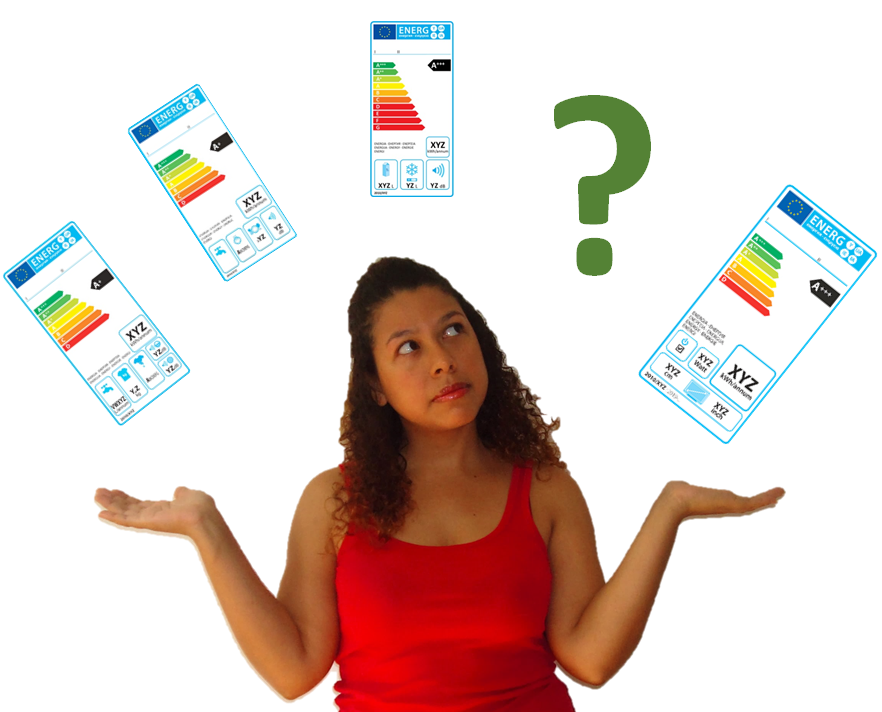Choosing energy efficient appliances

We have already talked about saving money by changing your light bulbs at home in another post, but lighting represents only about 15% of a household electricity bill. So, after changing your light bulbs you may want to do something more to reduce your impact on the environment while saving money on bills. Your next step should be checking your home appliances, which are responsible for most of your electricity consumption.
Home appliances should be evaluated in terms of their size or capacity in addition to their energy-efficiency rating label as these labels compare similar appliances that may not be the most appropriate for your home and your family habits. In order to start comparing these products and their labels, you have to understand how they are attributed to the appliances. Appliances are classified from dark green label (A+++, the most efficient) to red label (D, E, F or G depending on the type of appliance, the least efficient ones). Note that energy efficiency means using less energy to do a similar job, so a big fridge labelled A+++ may use more energy than a B labelled small fridge that is just enough for your household. In sum, letters in the labels only compare appliances with the same capacity. Do not use them to compare machines with different sizes or capacities!

EU energy efficiency labels also contain other important information, such as electricity consumption in KWh annum (kilowatt hour per annum). This is good to compare appliances that are different in terms of size and capacity as it shows how much energy the appliance uses in one year under same conditions of average annual use independent of its size and capacity. As an example, washing machines of different sizes and capacities (7 KG, 8 KG, 9 KG, 10 KG, etc.) are all measured considering 220 annual washing cycles, 128 of them partially loaded, half at 60° C temperature, half at 40° C and the remaining 92 cycles fully loaded at 60° C.

Comparing the electricity consumption will help you decide between a big A+++ rated appliance and a B rated small one in a situation as mentioned above. Take into account that this measure considers average annual use so, depending on how you use your washing machine, you may consume more or less energy than stated in the label. In other words, buying a small washing machine for a big household might result in it being used more frequently and in higher energy usage compared to that calculated by the labelling authority.
Just below the colour label and the energy consumption information, you can find additional information about the appliance’s capacity, size, volume, water consumption and noise level depending on the type of appliance. These labels are available on refrigerators, freezers, washing machines, electric tumble dryers, washer-dryers, dishwashers, lamps, electric ovens, air conditioners, televisions, vacuum cleaners and heaters.

The most important appliances to check in your home in terms of energy efficiency are fridges and freezers as they are on 24 hours a day and represent a great portion of your energy consumption. Governmental and social entities concerned with climate change have pushed technology developments to increase energy efficiency of home appliances and you should consider this when evaluating if you should buy new ones or not. If you still have an old fridge or another old appliance at home you should check this website to evaluate if the potential savings compensate the acquisition of new ones. You can save over 50 pounds annually just by replacing an old combined fridge freezer.
Evaluate your current use of home appliances to determine the appropriate size or capacity for your household, also evaluate if any of your appliances are too old and should be replaced for new ones. If you want to see in detail what is considered in each product category, check out the Official New Label Website. Additionally, take a look at this table of average appliance usage, cost and carbon footprint. After evaluating how big your environmental impact or carbon footprint is when using certain appliances, you may decide not to have some or at least reduce their use. So take action and Green It Yourself… Now!






